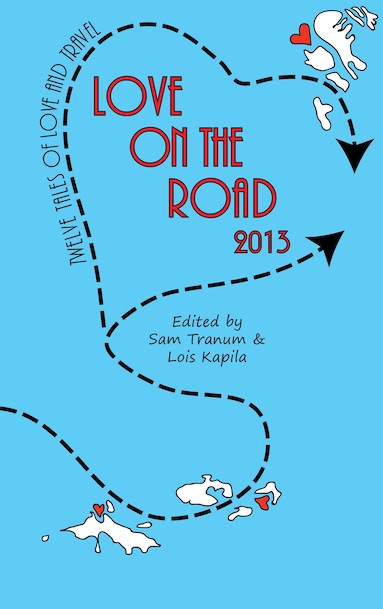By Wesley Sharer

When it comes to adapting much-loved stories for the big screen, whether the source is a popular novel, a classic fairy tale, or even another movie, there can never be a precise 1:1 match between the original and the copy. The question becomes not how to perfectly recreate every small detail, but how to put one’s own personal stamp on the material, how to leave the material richer than you found it. Every screenwriter has their own vision for their work, just as every reader will imagine a book their own way. This vision is further filtered through the mind of the director, and while results vary widely, we can group differences into three general categories: lighter, darker, and bigger.
Lighter is Likable
Perhaps the most common approach to adaptation is that of airbrushing out a story’s darker corners to make it more palatable to the mainstream with the idea that “lighter is more likable.” This is especially common when adapting young adult literature that can get away with violence which movies have a harder time excusing. This is logical to a certain extent—after all, books aren’t rated the way movies are. Readers of any age can basically pick up any book they want, and there’s a certain beauty to that. Ender’s Game, for example, wasn’t written for a young audience, it simply found one by virtue of who it appealed to. With this younger audience built in, however, the movie was forced to work within the confines of a PG-13 rating and eliminate its more savage scenes, an approach which lightened not only its tone but its message as well.
Written depictions of violence are somehow seen as less disturbing than their more visceral, visual brethren, especially where blood and gore are involved. The Hunger Games: Catching Fire does an incredible job suggesting the violence of a given situation without directly depicting it. During their victory tour, Katniss and Peeta witness a civilian being shot in the head by a peacekeeper. All we see is a hint of red mist, enough to know what happened without having our face rubbed in it. While this creative decision might be seen as tasteful, in this particular instance, the event is meant to serve as a turning point for Katniss, a moment when she realizes how bad things really are, and this doesn’t work as well when the violence is sanitized.

It is also common for film adaptations to be made lighter by removing thematic depth and social commentary. For example, as a novel World War Z touches on issues from politics to religion to the environment. It critiques bureaucracy, isolationism, and corruption. This political awareness was largely dropped along with the brutal violence for the book’s PG-13 movie adaptation. Instead, we get an admittedly fun zombie disaster movie, which is (unfortunately) a bit lighter thematically than its source material. Portraying the material in a way that is accessible to a wider audience is undeniably appealing to mainstream filmmakers, but when that portrayal simultaneously dulls the movie’s message the endeavor can become counterproductive.
Darker is Deeper
 Of course, this is not to say that the opposite road is necessarily better. There are plenty of books written for children that are adapted with a “darker means deeper” approach aimed at a slightly older, more mature audience. The Hobbit is the perfect example here. Peter Jackson’s adaptation attempts a return to the glory of his successful The Lord of the Rings trilogy, yet The Hobbit was originally written for a younger audience. Some of it works rather well, like the additional antagonists and the more comprehensive interactions with the dragon Smaug. But this approach requires a great deal of finesse in order to make characters built for kids sympathetic to more intelligent viewers, and ultimately the thirteen interchangeable dwarves are hard to care about and function more as comic relief. The tone is made darker, but the story is not thereby made deeper.
Of course, this is not to say that the opposite road is necessarily better. There are plenty of books written for children that are adapted with a “darker means deeper” approach aimed at a slightly older, more mature audience. The Hobbit is the perfect example here. Peter Jackson’s adaptation attempts a return to the glory of his successful The Lord of the Rings trilogy, yet The Hobbit was originally written for a younger audience. Some of it works rather well, like the additional antagonists and the more comprehensive interactions with the dragon Smaug. But this approach requires a great deal of finesse in order to make characters built for kids sympathetic to more intelligent viewers, and ultimately the thirteen interchangeable dwarves are hard to care about and function more as comic relief. The tone is made darker, but the story is not thereby made deeper.
This approach is brought to its extreme in something like last year’s Hansel & Gretel: Witch Hunters, a movie many people dismissed as garbage, but one which is worth looking at for its parallels to The Hobbit films. Written and directed by Tommy Wirkola, famous for his Norwegian Nazi zombie flick Dead Snow, Hansel & Gretel: Witch Hunters takes the classic fairy tale and amps up the violence and gore. Is this not exactly what Jackson is doing? He manufactures artificial maturity by adding action and romance without adding character development. The two movies take children’s stories and market them to adults by adding action rather than depth.
Another curious culprit of the “darker means deeper” approach is Zack Snyder’s new Superman film, Man of Steel. In an attempt to follow in the footsteps of Christopher Nolan’s Batman trilogy, Snyder succeeds primarily in testing the limits of what you can get away with in a PG-13 movie. Superman causes more damage to Metropolis than his nemesis General Zod. The reason Batman succeeds in becoming a dark comic book hero is that he has an ethical core; Nolan’s Batman trilogy plays out the conflict between justice and the law, which is never a sufficient condition to achieve it. Superman allegedly stands for hope, but this is never played out in the film. At best we get a depiction of how measures (Superman) taken against terrorists (Zod) produce the very results they attempt to prevent (the destruction of Metropolis), but this makes Superman a villain, not a hero.
Bigger is Better
The final category of film adaptation we see quite often is the “bigger means better” approach. The most prominent examples here are the plethora of books which are split into two when adapted for film: the last Twilight book, the last Harry Potter book, the last Hunger Games book, etc. This practice has been brought to its apex with Peter Jackson’s three-movie adaptation of a single novel with The Hobbit trilogy. Jackson has fabricated side plots and characters out of whole cloth in order to stretch a 300-page novel into a trilogy of 3-hour long movies. Some of the creations are integrated seamlessly, but others lack the depth of an original Tolkien creation, and his additions lack the characterization and depth of Tolkien’s original material.
 Non-fiction adaptations are especially guilty in this regard. This is understandable given the fact that filmmakers are trying to make something larger than life out of something which is by definition normal life-sized. Controversy surrounds Paul Greengrass’ recent film Captain Phillips for the accuracy of its portrayal of the eponymous captain. A lawsuit is being brought against the shipping company responsible for employing Phillips with the central charge being that the captain “ignored maritime warnings.” How much water the suit holds is one matter, but the point seems to be that the movie makes its protagonist into a bigger hero than he may have been in reality.
Non-fiction adaptations are especially guilty in this regard. This is understandable given the fact that filmmakers are trying to make something larger than life out of something which is by definition normal life-sized. Controversy surrounds Paul Greengrass’ recent film Captain Phillips for the accuracy of its portrayal of the eponymous captain. A lawsuit is being brought against the shipping company responsible for employing Phillips with the central charge being that the captain “ignored maritime warnings.” How much water the suit holds is one matter, but the point seems to be that the movie makes its protagonist into a bigger hero than he may have been in reality.
An exceptionally interesting example of this “bigger is better” trend is Jack The Giant Slayer. This movie is based on the fairy tale of “Jack and the Beanstalk,” but is taken to another level in terms of scale by introducing elements of the similar, but unrelated, fairy tale “Jack the Giant Killer.” The premise is identical to that of “Jack and the Beanstalk,” but instead of encountering a single giant after planting the magic beans he encounters an entire army of them. This might sound like another case of Hansel & Gretel: Witch Hunters, which takes its source material as an excuse for mindless action, but Jack the Giant Slayer actually works surprisingly well as a young adult fantasy adventure. I wouldn’t call it deep or moving, but it accomplishes its goal of creating an original and entertaining kids’ movie.
Conclusions
For writers and directors, the important lesson is that when making a film, whether an original screenplay or an adaptation, you have to want to tell the story. Hansel & Gretel: Witch Hunters is such a surprising stand-out because writer/director Tommy Wirkola really wanted to make an adult version of the fairy tale. (It was his favorite fairy tale growing up and he sat on the idea for years developing it.) What we get is silly and ridiculous, but it has personality despite its modest budget. On the other end of things is Man of Steel, which from the beginning was an effort by Warner Bros. to make more money off the Superman franchise and hopefully develop it into a trilogy to match Nolan’s Dark Knight. The result is flashy and has lots of expensive CGI, but it lacks the spark that would set it apart from the masses.
*
Don’t forget to let us know your picks for the 2014 Literary Fauxscars. The films mentioned in this article that are nominated for awards this year are:
- Captain Phillips — Best Character Portrayal by an Actor (Tom Hanks), Best Non-Fiction Adaptation, and Best “Stand Alone” Film
- Ender’s Game for Best Cinematography & Production Design and Best “Young Adult” Adaptation
- The Great Gatsby for Best Character Portrayal by an Actor (Leonardo DiCaprio), Best Character Portrayal by an Actress (Carey Mulligan), Best Portrayal of a Literary Love Story, Best Cinematography & Production Design, and Best Adaptation of a Classic
- The Hobbit: The Desolation of Smaug for Best Character Portrayal by an Actor (Martin Freeman), Best Cinematography & Production Design, and Best Adaptation of a Classic
- The Hunger Games: Catching Fire Best Character Portrayal by an Actress (Jennifer Lawrence), Best Portrayal of a Literary Love Story, Best Cinematography & Production Design, and Best “Young Adult” Adaptation
- World War Z for Best Cinematography & Production Design












